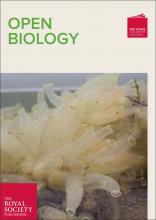- EN - English
- CN - 中文
Inositol Phosphates Purification Using Titanium Dioxide Beads
利用二氧化钛珠纯化磷酸肌醇
发布: 2018年08月05日第8卷第15期 DOI: 10.21769/BioProtoc.2959 浏览次数: 6145
评审: Alessandro DidonnaPooja TeotiaDoyel Sen
Abstract
Inositol phosphates (IPs) comprise a family of ubiquitous eukaryotic signaling molecules. They have been linked to the regulation of a pleiotropy of important cellular activities, but low abundance and detection difficulties have hampered our understanding. Here we present a method to purify and enrich IPs or other phosphate-rich metabolites from mammalian cells or other sample types. Acid-extracted IPs from cells bind selectively via their phosphate groups to titanium dioxide beads. After washing, the IPs are easily eluted from the beads by increasing the pH. This technique, in combination with downstream analytical methods such as PAGE or SAX-HPLC, opens unprecedented investigative possibilities, allowing appropriate analysis of IPs from virtually any biological or non-biological source.
Keywords: Inositol polyphosphate (肌醇多磷酸盐)Background
Inositol phosphates (IPs) are a family of conserved signaling molecules, ubiquitous in eukaryotes (Irvine and Schell, 2001; Tsui and York, 2010). They have been implicated in the regulation of a broad range of cellular activities, including calcium signaling, trafficking, and phosphate homeostasis (Wilson et al., 2013; Thota and Bhandari, 2015; Azevedo and Saiardi, 2017). However, our understanding of IPs signaling has been hampered by the fact that they can be difficult to study.
Unlike other phosphate-rich molecules such as nucleotides, IPs do not absorb in the UV/Vis range, and are often present at relatively low abundance in cells. The traditional methodology for IP detection and analysis is to radioactively metabolically label cells with 3H-inositol that is taken up and incorporated into IPs over 1-5 days (Wilson and Saiardi, 2017). After labeling, IPs are extracted with perchloric acid; these extracts are neutralised before separation by strong anion exchange (SAX) HPLC and scintillation counting of each fraction (Azevedo and Saiardi, 2006). The use of 3H-labelled IPs and chromatography has also been required for in vitro biochemical studies. The requirement for radioactive IPs or metabolic labeling limits the possible lines of investigation. These are time-consuming, technically demanding and expensive experiments.
We previously developed a polyacrylamide gel electrophoresis (PAGE) method for resolving and visualizing IPs (Losito et al., 2009; Loss et al., 2011). This technique was immediately useful in following in vitro reactions, as well as analyzing in vivo high abundance IPs such as IP6, IP7 and IP8 from Dictyostelium discoideum (Pisani et al., 2014), or IP6 from plant seeds (Desai et al., 2014; Kolozsvari et al., 2014). However, in the majority of cell types or model organisms, low IP concentrations make it impossible to run a PAGE gel of enough neutralized extract to visualize IPs while maintaining correct gel migration. In mammalian cells, the most abundant IP is IP6 at 40-100 µM (measured in cell lines such as HL60, C1866 and BAF3; French et al., 1991; Bunce et al., 1993), while the inositol pyrophosphate IP7 is thought to be present at sub-µM levels. We were therefore inspired to develop the present method that uses titanium dioxide beads to purify cold or radioactive IPs regardless of their abundance (Wilson et al., 2015). Titanium dioxide binds the phosphate groups of the IPs. The concentrated IPs can be analyzed by PAGE, SAX-HPLC, or other techniques.
The use of titanium dioxide beads now enables analysis of total unlabeled IPs from any cell type (Pavlovic et al., 2015; Wilson et al., 2015; Gu et al., 2016; Pavlovic et al., 2016). It also allows the study of IPs extracted from previously impossible sample types, including large volumes of liquid media, biofluids, or animal tissues. For biochemical work, the method can be used to remove salt and proteins from IPs preparations. Here we present the method as used for purifying IPs from cultured adherent mammalian cells.
Materials and Reagents
- Pipette tips (Starlab, catalog number: S1112-1830 )
- 1.5 ml Eppendorf-style microcentrifuge tubes (Starlab, catalog number: S1615-5500 )
- 50 ml Falcon centrifuge tubes (Corning, catalog number: 352070 )
- 15 cm tissue culture dishes (Thermo Fisher Scientific, catalog number: 168381 )
- pH test strips (Sigma-Aldrich, catalog number: P4536-100EA )
- Titansphere TiO2 beads, 5 µm (Hichrom, catalog number: 5020-75000 )
- PBS (Thermo Fisher Scientific, catalog number: 20012019 )
- 0.25% Trypsin-EDTA (Thermo Fisher Scientific, catalog number: 25200056 )
- Double distilled water (ddH2O) or Milli-Q water (Millipore)
- Perchloric acid, 70% (Sigma-Aldrich, catalog number: 244252-1L )
- Ammonium hydroxide, 28-30% (Sigma-Aldrich, catalog number: 221228-1L )
- 1 M perchloric acid (see Recipes)
- ~2.8% ammonium hydroxide (see Recipes)
Equipment
- Pipettes (Gilson, models: P1000 and P200, catalog numbers: F123602 , F123601 )
- Ice box
- Balance (Acculab, model: ALC-80.4 )
- Humidified incubator (Eppendorf, model: Galaxy® 170 R , catalog number: CO17311002)
- Benchtop centrifuge (Eppendorf, catalog number: 5702000365 )
- Benchtop centrifuge with cooling (LaboGene, model: ScanSpeed 1730R )
- Rotator (Cole-Parmer, Stuart, model: SB3 )
Note: This should be placed in a fridge or cold room. - Vortex mixer (Scientific Industries, model: Vortex Genie 2 , catalog number: SI-0266)
- Centrifugal evaporator (Martin Christ Gefriertrocknungsanlagen, catalog number: RVC 2-18 )
- Tilt table (Cole-Parmer, Stuart, catalog number: SSM4 )
- Cell scrapers (Greiner Bio One International, catalog number: 541070 )
Procedure
文章信息
版权信息
© 2018 The Authors; exclusive licensee Bio-protocol LLC.
如何引用
Wilson, M. S. C. and Saiardi, A. (2018). Inositol Phosphates Purification Using Titanium Dioxide Beads. Bio-protocol 8(15): e2959. DOI: 10.21769/BioProtoc.2959.
分类
生物化学 > 其它化合物 > 肌醇磷脂
您对这篇实验方法有问题吗?
在此处发布您的问题,我们将邀请本文作者来回答。同时,我们会将您的问题发布到Bio-protocol Exchange,以便寻求社区成员的帮助。
Share
Bluesky
X
Copy link











